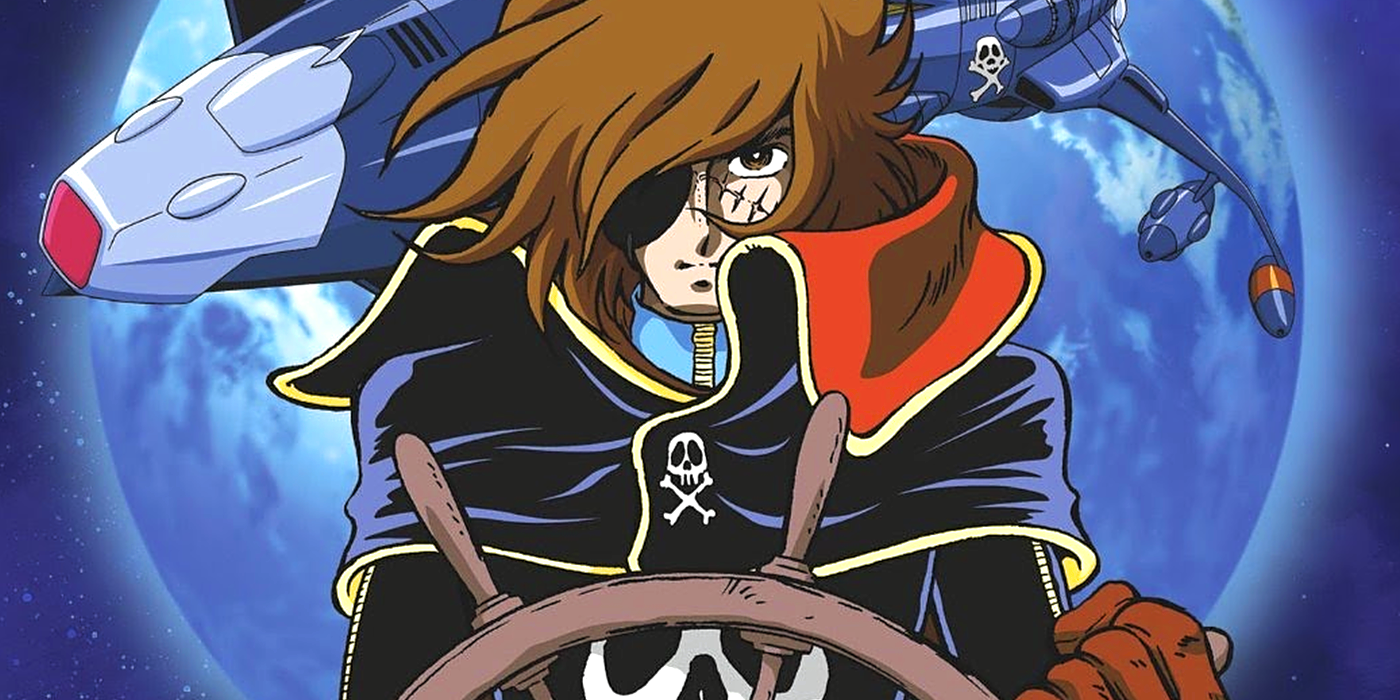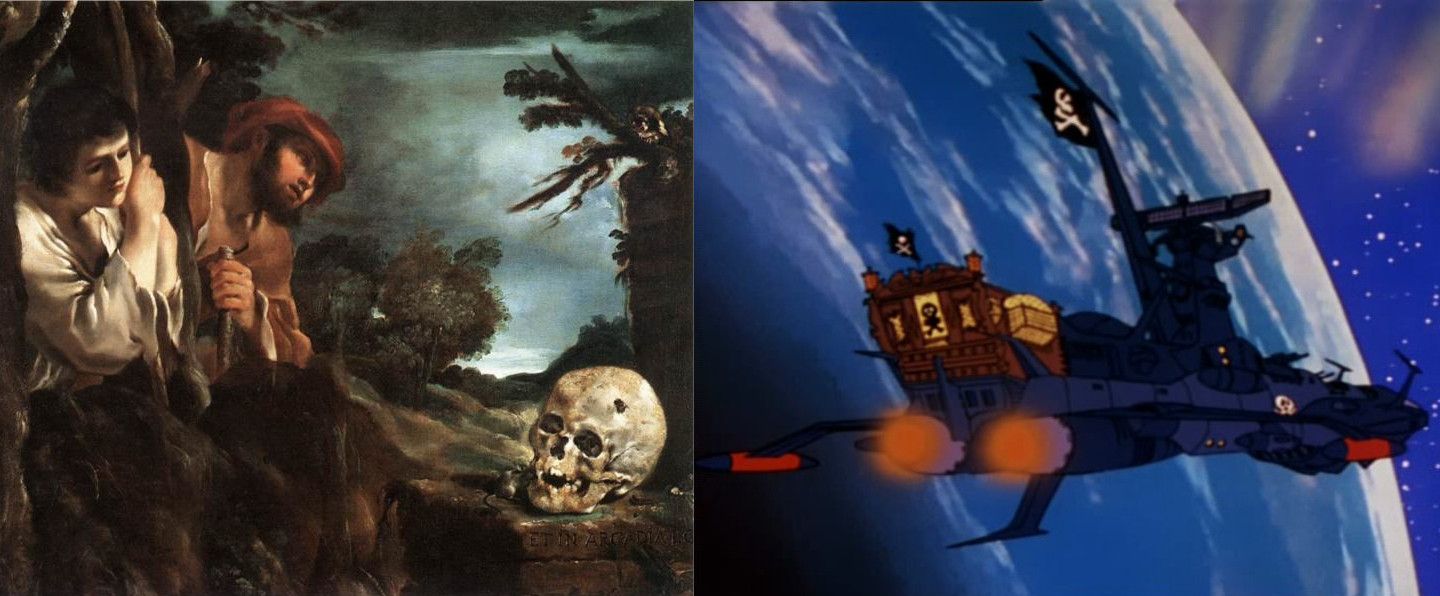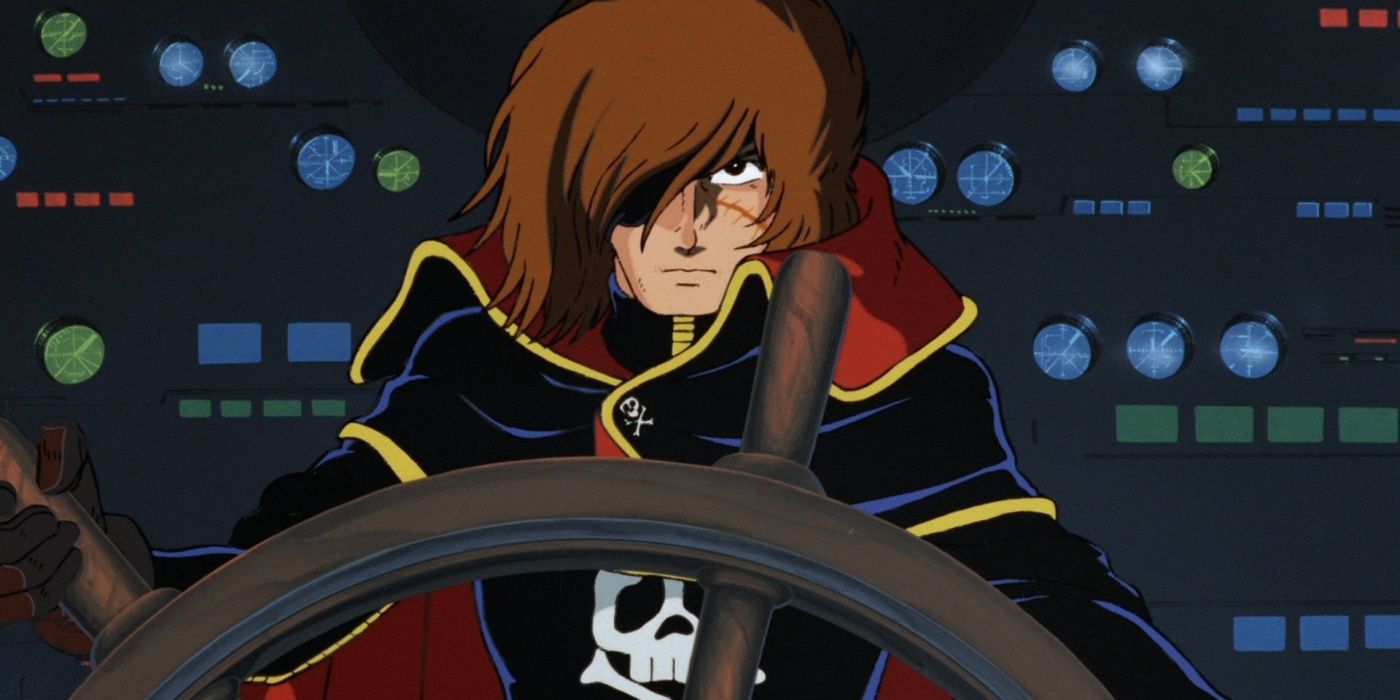Originally debuting in 1977, Space Pirate Captain Harlock remains one of the most influential manga and anime series of all time. Written by Leiji Matsumoto, the series tells the story of Harlock, the renegade space pirate who, from his ship Arcadia, fights to restore the fading spirit of a dystopian Earth. Known even in the crowded field of 70s space opera anime equally well for its space battles and philosophical themes, Harlock draws from a wide selection of literary and art forms to tell its unique story. Among anime, Space Captain Harlock is known for its dense and striking art, its upfront, frequently heavy-handed existentialism and an aggressively sincere tone ripe for satire.
In the series, Captain Harlock is first and foremost a space pirate; the Jolly Roger that flies from his vessel and sits on his chest serves as a sign and a warning to his enemies. However, while the freedom-loving rebelliousness of piracy is not uncommon for conventional Romantic antiheroes like Captain Harlock, other, more subtle elements of the series' story offer a more nuanced view of its themes and conflicts. Specifically, the symbolism and history of the name of Harlock's vessel, Arcadia, add complexity to these same themes and conflicts.
Et in Arcadia
In brief, the Arcadia -- inspired by a province amid the islands of Greek Peloponnese -- has over centuries come to symbolize a vision of lost, idyllic pastoralism. Developed by poets such as Virgil, Sidney and de Vega, the idea expresses the promise of a simple life in harmony with nature, apart from the corrupting influences of civilization -- an idea that inspires Harlock's war against both the ennui of dystopian Earth, and eventually the aggression of the Mazones.
Yet beyond this, the series' main interest comes not from merely recycling this concept but instead from how Space Captain Harlock's creators incorporate conflicting elements of the idea of Arcadia into the series' story and design. In the story, the Arcadia was built and gifted to Harlock by his close friend, the enigmatic genius Tochiro Oyama. As revealed in later episodes of the anime, the ship was actually a reconstruction of another vessel named Death Shadow. While ominous, the ship's former name suggests -- remarkably -- yet another layer to this convoluted allusion.
Memento Mori
“If you are a man, you’ll do what’s important before you grieve.”
The locus of this allusion is a famous 17th-century painting titled Et in Arcadia Ego, completed alternately by the French and Italian painters Poussin and Guernica. The painting depicts fictionalized shepherds, exploring the wilds of Arcadia and stumbling on a skull and a tomb. On the tomb reads the Latin inscription "Et in Arcadia, Ego," or "Even in Arcadia, I am" -- the speaker of the inscription being death itself. The conventional interpretation reads the painting as a memento mori -- a reminder of one's mortality even amidst earthly paradise -- which has deliberate significance in the design and story of Space Pirate Captain Harlock and informs its central themes and conflicts.
For the anonymous shepherds of the painting and for Captain Harlock himself, Arcadia is a failed refuge, whose failure suggests the general futility of all escapism. Yet for Harlock in particular in light of his friend Oyama's death, this impression has even greater weight. The Arcadia that encloses him reminds him of his own mortality but adds urgency to fulfill the promise made to his friend and its creator: never abandon Earth. By emblazoning himself and his vessel thusly, Harlock makes himself into a symbol of this conviction, taking up his late friend's dying wish to protect their home, Earth -- even from itself.



